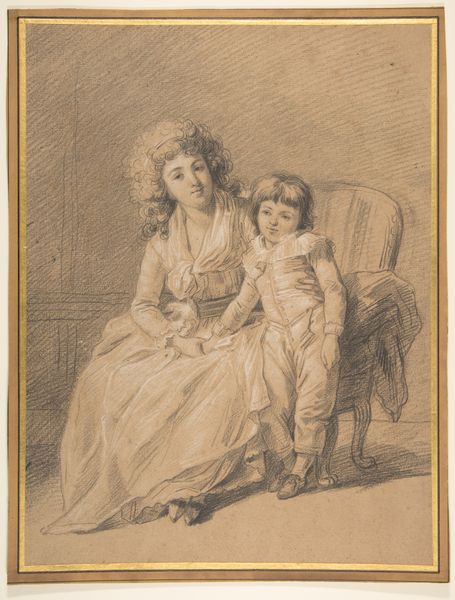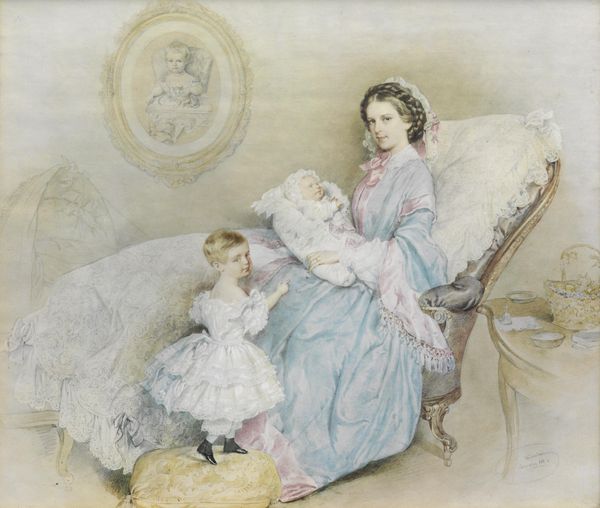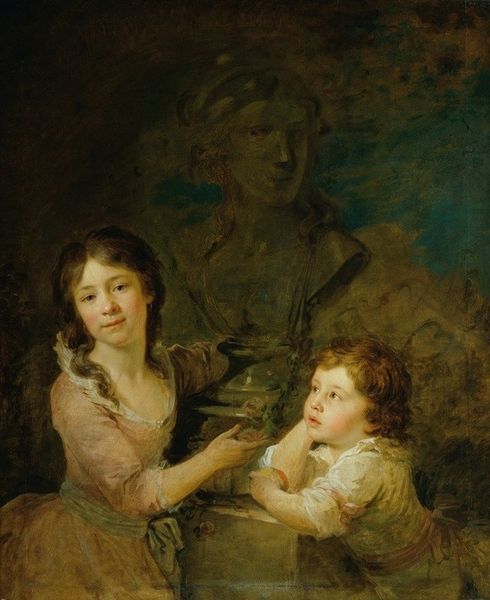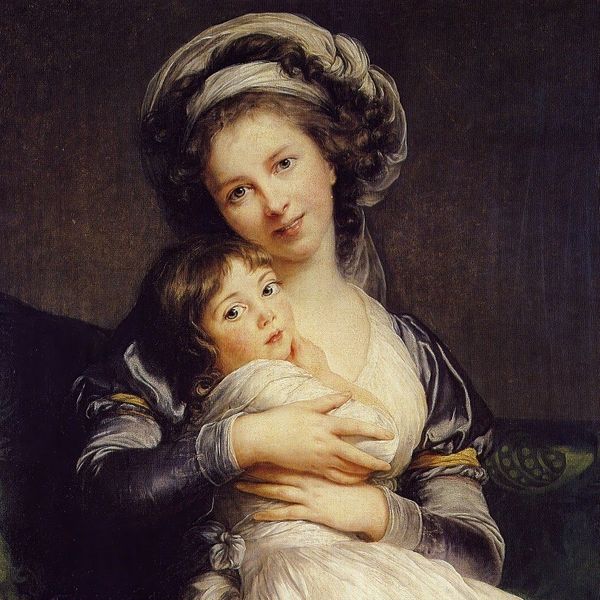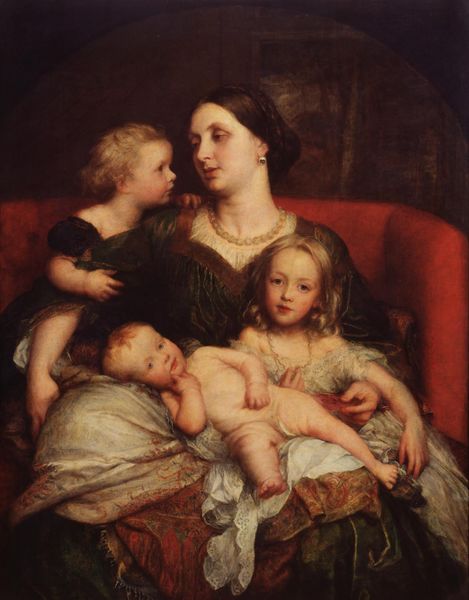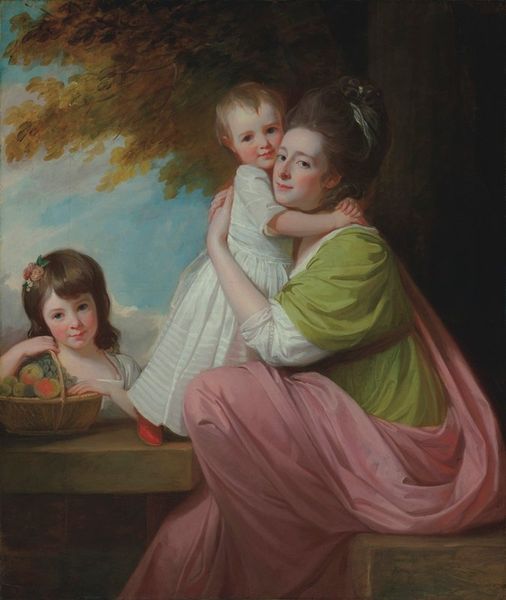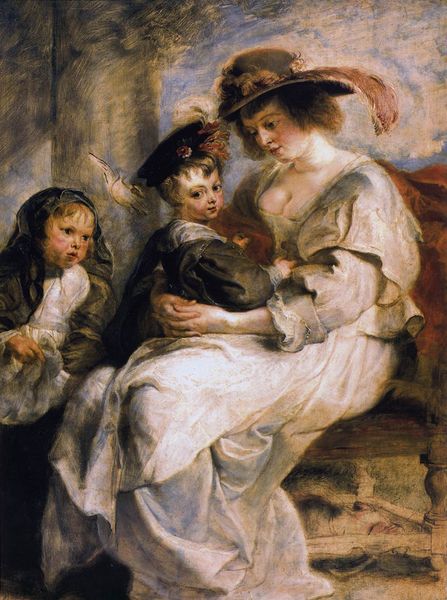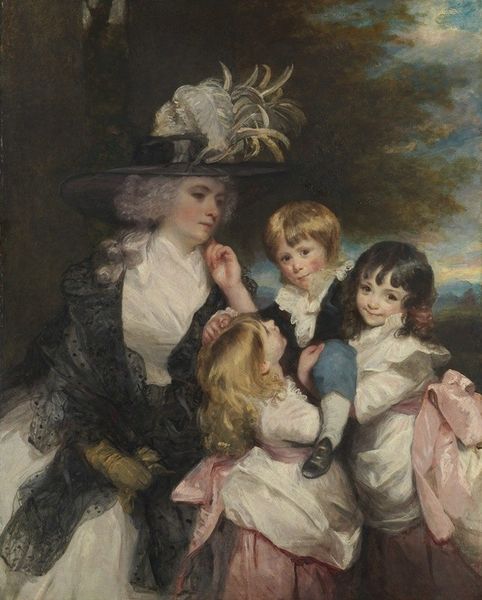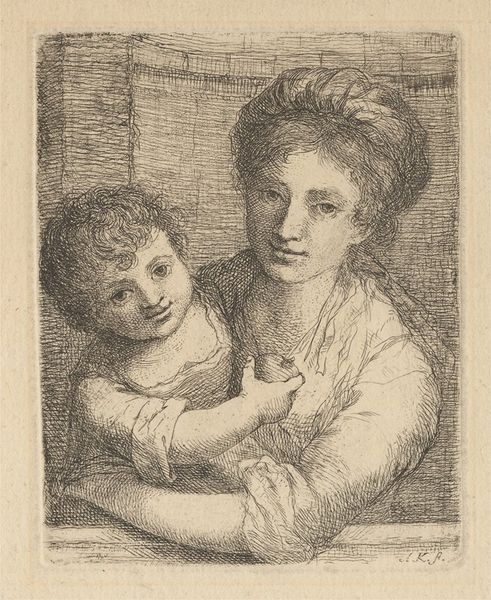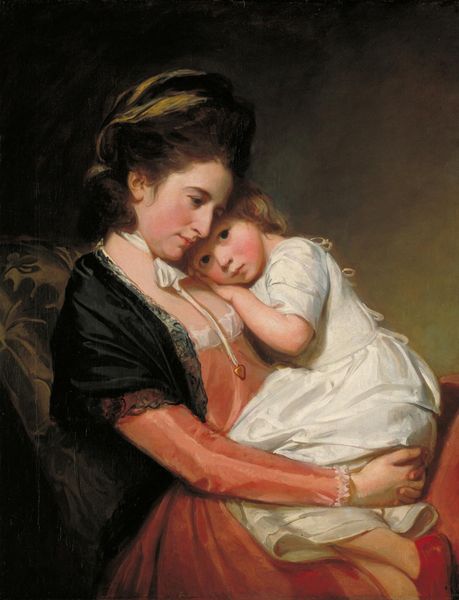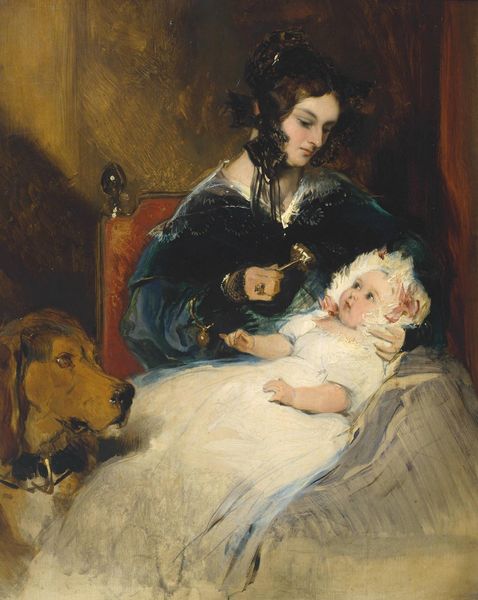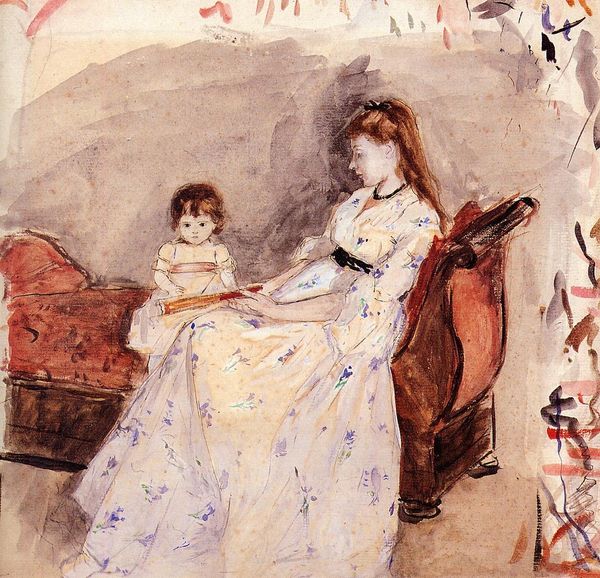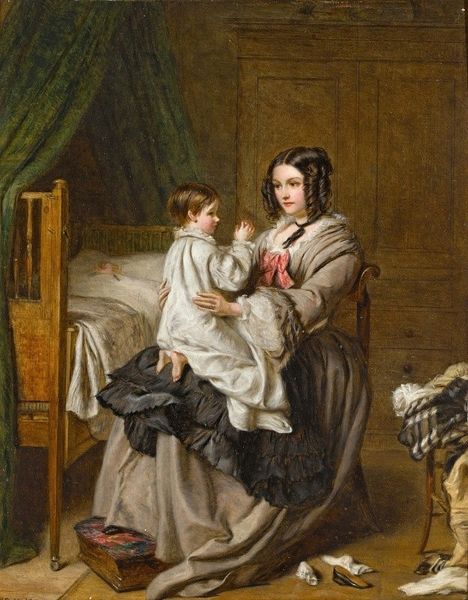
watercolor
#
portrait
#
oil painting
#
watercolor
#
group-portraits
#
romanticism
#
watercolour illustration
#
watercolor
Copyright: Public domain
Editor: We're looking at "Mother with Her Children," a watercolour by Thomas Sully, created in 1831. The delicate rendering of the figures really captures my attention; it almost feels like a study in softness. The color palette is light and harmonious, yet there's also a slightly melancholic tone, don't you think? What stands out to you? Curator: I am drawn to the visual interplay between light and shadow and its semiotic role within the image. Notice how Sully uses light, specifically its fall on the folds of the woman's dress, creating not just form but also a rhythmic pattern? Observe the positioning of the children in the composition and their relationship to the light as well; Sully used these intrinsic qualities to construct a compelling, perhaps even poignant narrative. Editor: Poignant indeed! It’s amazing how much emotion comes through these compositional choices and color usage alone. You pointed out the rhythmic pattern. Are there more examples of formal harmony in this work? Curator: Certainly. Examine how the circular form of the mother’s arm mirrors and contains the curvature of her children’s faces, a closed shape which implies unity and protection. Additionally, consider how the darker, somber hues create a backdrop to emphasize the primary shapes of light that articulate the forms. Sully is indeed concerned with form. Editor: It's fascinating how his manipulation of light and form dictates our reading of the subject. Are we intended to appreciate these techniques rather than search for meaning outside the painting? Curator: Precisely! The essence lies within its artistic form and the relations thereof. In that, the observer will find true comprehension. Editor: I’m now convinced that understanding the structural elements really opens up another way to look at art. Curator: I agree. It brings us to another level of the reading that form conveys beyond meaning.
Comments
No comments
Be the first to comment and join the conversation on the ultimate creative platform.
